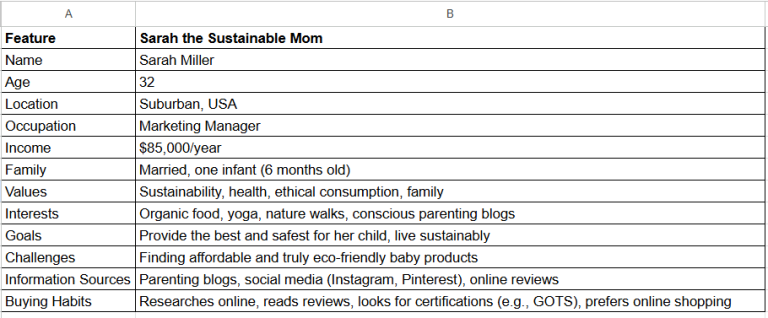In today’s crowded digital landscape, shouting your marketing message to everyone is like whispering in a hurricane. It’s inefficient, expensive, and ultimately ineffective. The key to successful marketing lies in identifying and connecting with the right audience – the people who are most likely to be interested in your products or services and become loyal customers.
This comprehensive guide will walk you through the essential steps of finding your best marketing audience, providing actionable strategies and real-world examples to illuminate the process.

Why Defining Your Target Audience Matters
Before diving into the “how,” let’s understand the “why.” Clearly defining your target audience offers numerous benefits:
- Increased Marketing ROI: By focusing your efforts on those most likely to convert, you’ll see a better return on your marketing investment. No more wasted ad spend on uninterested individuals.
- More Effective Messaging: When you understand your audience’s needs, pain points, and aspirations, you can craft compelling and relevant marketing messages that resonate deeply.
- Improved Product Development: Understanding your ideal customer can inform your product development roadmap, ensuring you’re creating solutions that truly meet their needs.
- Stronger Brand Loyalty: When customers feel understood and catered to, they are more likely to become loyal advocates for your brand.
- Competitive Advantage: By nicheing down and focusing on a specific audience, you can become a go-to expert in that area, giving you a significant competitive edge.
Step 1: Deep Dive into Your Existing Customers
Your current customer base is a goldmine of information. Analyzing their characteristics and behaviors can provide valuable insights into who is already finding value in your offerings.
- Demographics: Gather data on age, gender, location, income, education, and occupation.
- Example: A small online retailer selling sustainable baby clothes analyzes their customer data and finds that 75% of their customers are women aged 25-40, residing in urban areas, with a household income of $70,000+, and a strong interest in eco-conscious living.
- Psychographics: Understand their values, interests, attitudes, and lifestyle.
- Example: The same baby clothes retailer might find through surveys and social media analysis that their customers value natural materials, ethical sourcing, and minimalist aesthetics. They are likely interested in parenting blogs, sustainable living communities, and brands with a strong social mission.
- Behavioral Data: Analyze how they interact with your brand – what products they buy, how often they purchase, what channels they use, and how they engage with your content.
- Example: The retailer discovers that their average customer makes 3 purchases per year, primarily through their website, and frequently engages with their Instagram posts about the benefits of organic cotton.
- Conduct Customer Surveys and Interviews: Directly ask your customers about their needs, motivations, and experiences.
- Example: The retailer sends out a post-purchase survey asking about what factors influenced their decision to buy and what other baby-related products they are interested in. They also conduct a few in-depth interviews with loyal customers to gain deeper qualitative insights.
Step 2: Conduct Market Research
Go beyond your existing customers and explore the broader market to identify potential new audience segments.
- Competitor Analysis: Analyze your competitors’ target audiences. Who are they trying to reach? What marketing strategies are they using? This can reveal underserved niches or potential overlaps.
- Example: The baby clothes retailer observes that some competitors focus heavily on budget-friendly options, while others target luxury consumers. This identifies a potential opportunity to further emphasize the value proposition of their sustainable and ethically produced clothing at a mid-range price point.
- Example: The baby clothes retailer observes that some competitors focus heavily on budget-friendly options, while others target luxury consumers. This identifies a potential opportunity to further emphasize the value proposition of their sustainable and ethically produced clothing at a mid-range price point.
- Industry Trends: Stay informed about emerging trends and shifts in consumer behavior within your industry.
- Example: The retailer notes the growing trend of parents seeking organic and natural products for their children, reinforcing their focus on sustainable materials.
- Example: The retailer notes the growing trend of parents seeking organic and natural products for their children, reinforcing their focus on sustainable materials.
- Social Listening: Monitor social media conversations, online forums, and review sites to understand what people are saying about your industry, your competitors, and their own needs and pain points.
- Example: By monitoring relevant hashtags and online communities, the retailer identifies conversations about skin sensitivities in babies and the desire for clothing made without harsh chemicals, further validating their product focus.
- Example: By monitoring relevant hashtags and online communities, the retailer identifies conversations about skin sensitivities in babies and the desire for clothing made without harsh chemicals, further validating their product focus.
- Utilize Market Research Tools: Explore tools like Google Trends, industry reports, and audience analysis platforms to gather data on demographics, interests, and online behavior.
- Example: Using Google Trends, the retailer sees a consistent increase in search interest for terms like “organic baby clothes” and “sustainable baby brands” over the past few years.
Step 3: Create Buyer Personas
Based on your research, create detailed fictional representations of your ideal customers. These “buyer personas” humanize your target audience and make it easier to understand their motivations and needs.
- Give them a name: (e.g., “Sarah the Sustainable Mom”)
- Include demographic details: (Age: 32, Location: Suburban, Income: $85,000, Occupation: Marketing Manager)
- Describe their psychographics: (Values: Sustainability, health, family. Interests: Yoga, farmers markets, conscious parenting blogs. Challenges: Finding safe and eco-friendly products within her budget.)
- Outline their goals and motivations: (Wants the best for her baby’s health and the planet. Seeks high-quality, durable clothing that aligns with her values.)
- Detail their buying behavior: (Researches products online, reads reviews, prefers brands with transparent sourcing, shops online monthly.)
- Identify their pain points: (Concerned about harmful chemicals in conventional clothing, frustrated by fast fashion waste, sometimes struggles to find affordable and sustainable options.)

Step 4: Segment Your Audience (If Necessary)
Depending on the diversity of your ideal customers, you might need to segment your audience into smaller, more specific groups based on shared characteristics. This allows for more targeted messaging and tailored marketing campaigns.
- Example: The baby clothes retailer might identify two key segments: “Eco-Conscious New Parents” (like Sarah) and “Practical Value Seekers” (who prioritize durability and affordability but are still open to sustainable options if the value proposition is clear). They can then create slightly different marketing messages and promotions for each segment.
Step 5: Choose the Right Marketing Channels
Once you have a clear understanding of your target audience, you can strategically select the marketing channels where they spend their time and are most likely to engage with your brand.
- Consider their demographics and psychographics: Are they active on Instagram, LinkedIn, TikTok, or Facebook? Do they read specific blogs or publications? Do they attend industry events?
- Align your content with the channel: Visual platforms like Instagram and Pinterest are great for showcasing product aesthetics, while LinkedIn might be more suitable for sharing industry insights and thought leadership.
- Track your results: Monitor the performance of your different channels to see where you’re reaching your target audience most effectively.
Conclusion
Finding your best marketing audience is an ongoing process that requires continuous research, analysis, and adaptation. By diligently following these steps and leveraging data-driven insights, you can move away from generalized marketing and towards targeted strategies that resonate with the people who matter most to your business. Remember that understanding your audience is not just about demographics; it’s about delving into their motivations, needs, and aspirations to build meaningful connections and drive sustainable growth.

